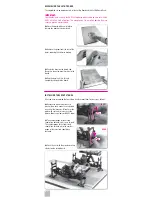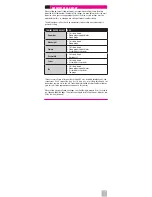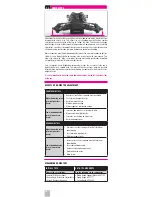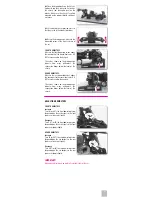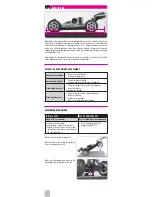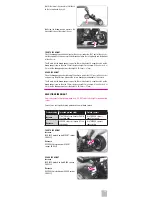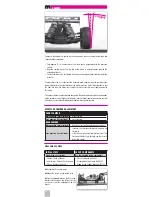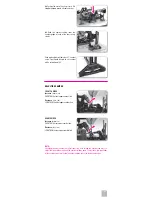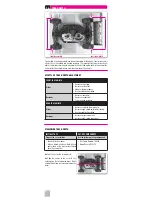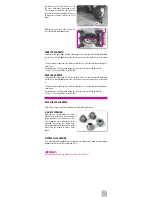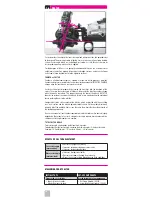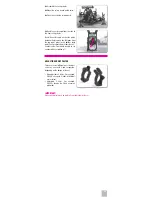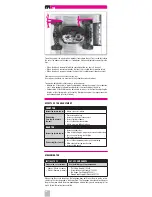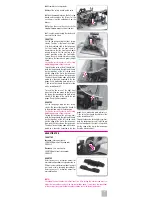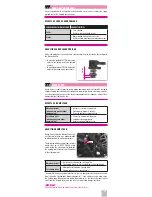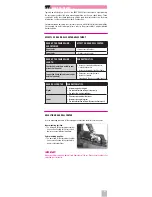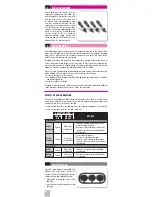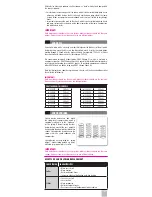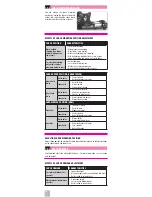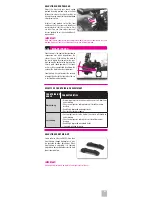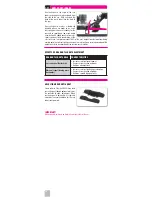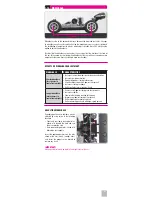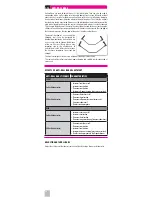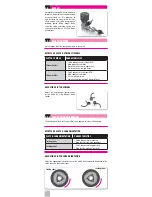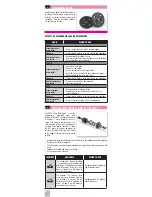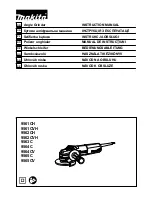
22
1.7 STEERING
Steering systems may be adjustable for Ackermann angle, servo saver preload, and
bump steer.
ACKERMANN
1.7.1
Ackermann controls the difference in steering arcs between the front inside and outside
wheels; the inside wheel always has a tighter arc in any corner. The amount of grip
provided by the tires, in relation to the steering arc and speed of the car, create an amount
of measurement called a “slip angle” for each wheel. For some tires you need a greater
difference in slip angles between the inner and outer wheel and for some you need less.
The servo saver on off-road cars & truggies forces the inside wheel to increase its turning
angle at a greater rate than the outside wheel, as the servo turns either way from center.
The rate of the increase, called Ackermann effect, can be changed by the angle of the
steering rods connecting the steering plate. The straighter the rods are in relation to each
other, the more Ackermann effect will be applied to the inside wheel
EFFECTS OF ACKERMANN ADJUSTMENT
STEERING ROD INNER MOUNTING
POSITION
CHARACTERISTICS
Forward holes (sharper angle)
• Smoothens out steering response
• Car reacts smoothly
• Better suited to smooth fl owing tracks with
high speed corners
Rearward holes (shallower angle)
• Quickens initial steering response
• Car reacts faster to steering input
• Better suited to small, tight tracks
ADJUSTING ACKERMANN
Adjust the Ackermann angle by moving the inside ends of the steering rods into different
holes in the steering plate.
IMPORTANT!
After adjusting the Ackermann, recheck that your front toe setting is still correct.
steering

